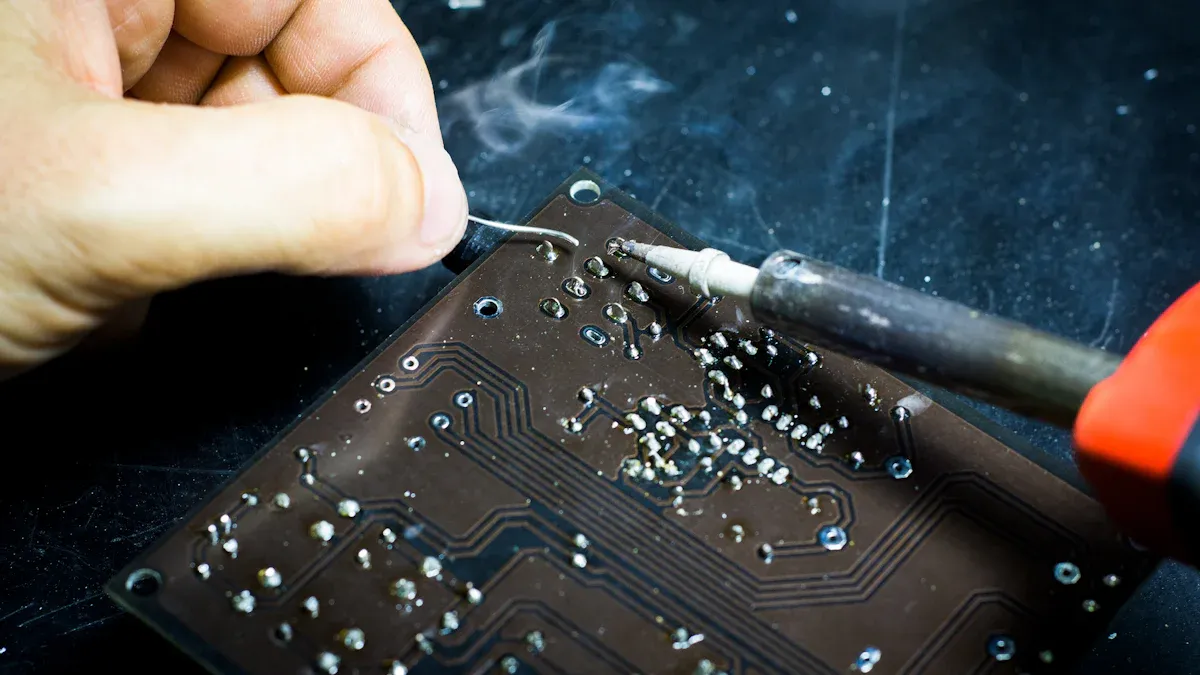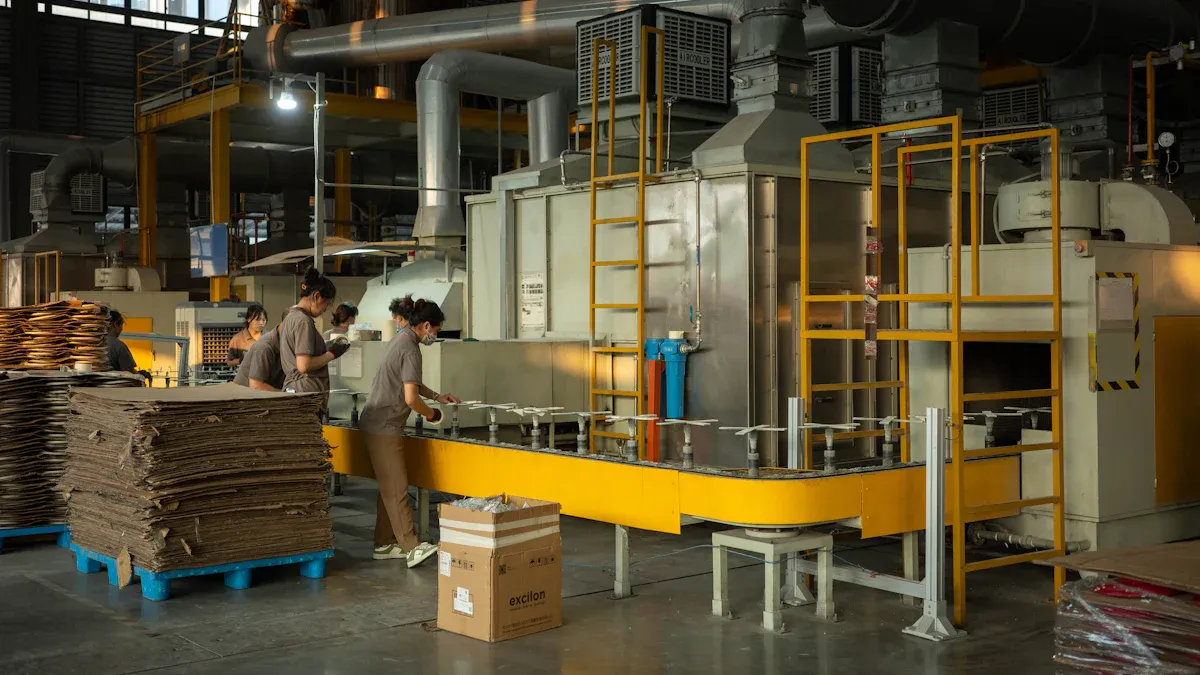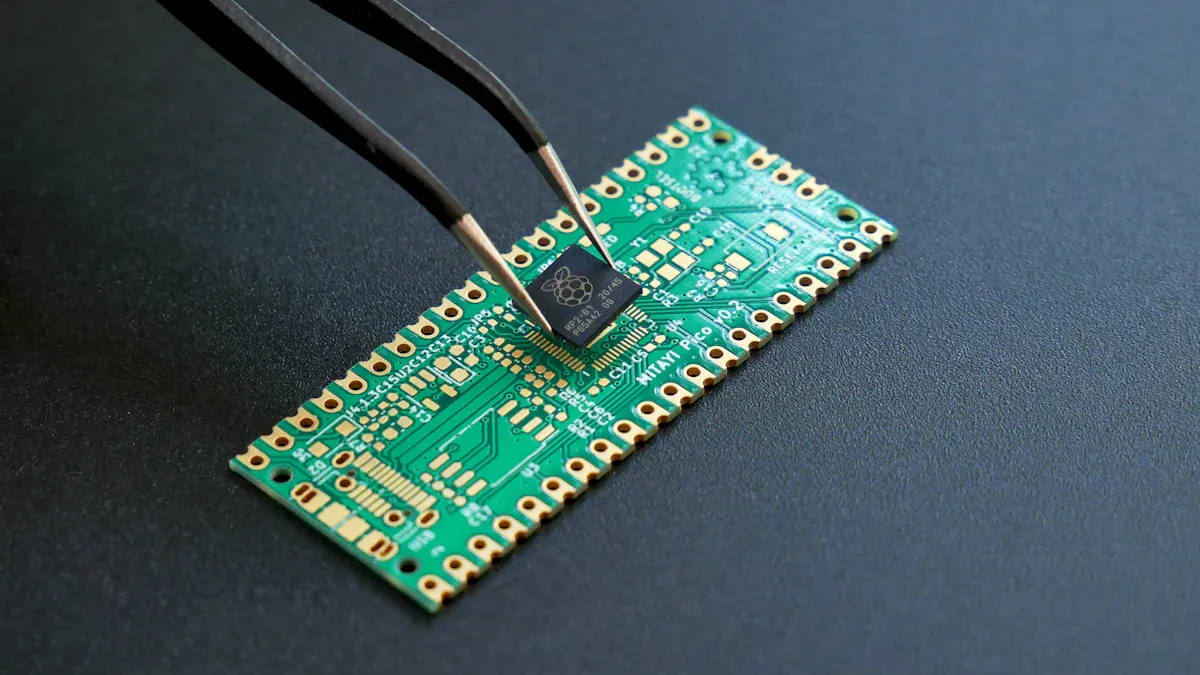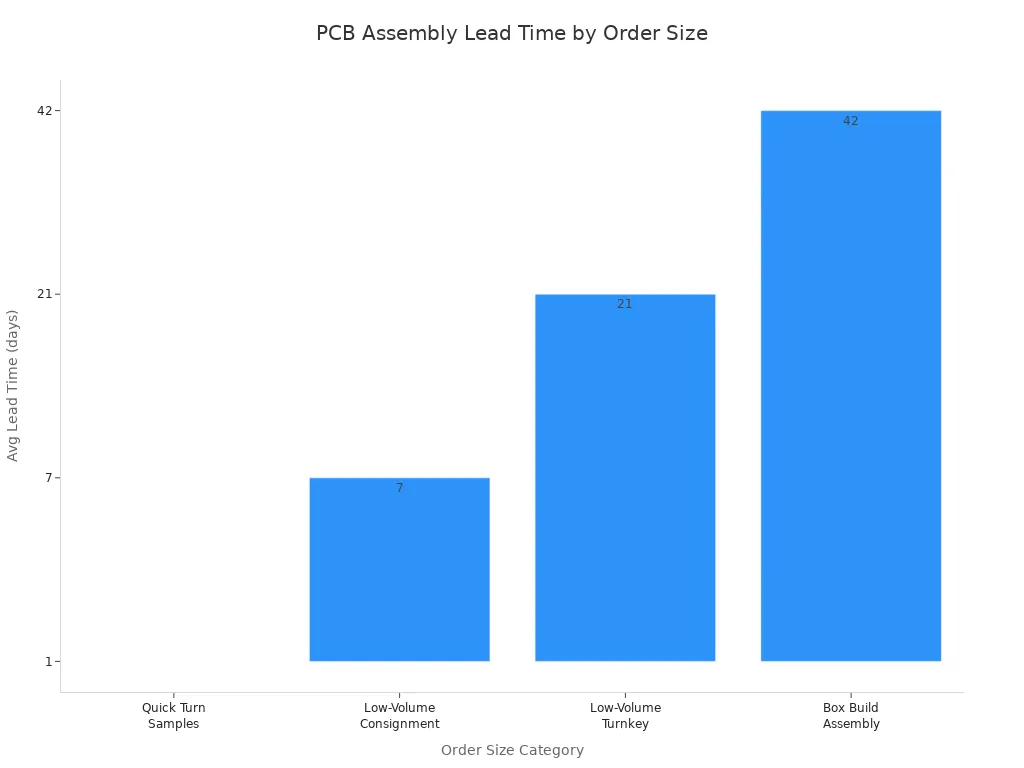How to Choose a Reliable PCB Assembly Manufacturer for Your Project

Selecting a reliable pcb assembly manufacturer ensures your project meets quality and deadline expectations. You need to consider several key factors when making this choice:
Experience and production capabilities that match your project needs
Strong quality control and international certifications like ISO 9001
Transparent pricing and cost-effectiveness
Timely delivery and efficient logistics
Proven reputation and effective communication with support teams
Choosing the right partner helps you avoid costly mistakes and delays.
Key Takeaways
Define your project needs clearly, including order size, timeline, and special requirements to find a manufacturer that fits your goals.
Research manufacturers carefully by checking their experience, certifications, customer reviews, and prototype services to ensure quality and reliability.
Evaluate manufacturers’ capabilities by confirming their certifications, technology, quality control, and testing processes to avoid defects and delays.
Choose a partner with transparent pricing, strong customer support, and reliable delivery times to keep your project on budget and on schedule.
Protect your project by verifying data security measures, checking references, and watching for red flags that indicate poor quality or risks.
Define Project Needs
Project Specs
Before you start searching for a manufacturing partner, you need to define your project specifications. Clear specs help you communicate your needs and avoid misunderstandings. Consider the following:
Minimum and maximum order quantities—these numbers help you match your current and future production needs.
Cancellation policy—know the terms in case you need to change or cancel an order.
Manufacturing philosophy—some companies focus on speed, others on cost or effectiveness.
Process control—make sure the manufacturer can meet your design requirements and maintain quality.
Technology compatibility—confirm support for surface mount, through-hole, or special cleaning processes.
Inspection and testing procedures—these steps catch errors and ensure quality at every stage.
Certifications and compliance—look for ISO 9001, IPC, RoHS, and other standards.
Environmental compliance—choose partners who follow sustainable practices and restrict hazardous substances.
ESD safeguards—protect your boards from electrostatic discharge failures.
Tip: Share detailed drawings and documentation with your manufacturer. This step helps avoid costly mistakes and delays.
Volume and Timeline
Project volume and timeline shape your manufacturing strategy. For small runs or prototypes, manual assembly offers flexibility and adapts to design changes, but it may take longer. Automated assembly works best for large-scale production, providing speed and consistency, though it requires higher setup costs.
Low-volume assembly (under 1,000 units) suits prototypes and specialized products.
Manufacturers with flexible minimum order quantities help you avoid high costs for small batches.
Fast turnaround (5–15 days) and the ability to handle design changes are key for small runs.
Component availability and design complexity affect timelines. Manufacturers with buffer stocks and streamlined designs reduce delays.
Scalable partners can adjust processes for both small and large orders, keeping costs down and quality high.
Note: Ask questions like, “What is your minimum order quantity?” and “Can you handle design changes during production?”
Special Requirements
Many projects need special features or compliance. Common requests include:
RoHS compliance—requires lead-free soldering and certified materials.
Advanced component placement—surface mount and through-hole guidelines, thermal management, and proper spacing.
Selective surface finishes—ENIG, lead-free HASL, OSP, and others for performance and environmental standards.
Regulatory certifications—IPC, UL, RoHS, and CE, with supporting documentation.
Detailed fabrication instructions—such as impedance control, via types, and mechanical details.
Test and validation—like in-circuit testing and design verification.
Tip: Always request Certificates of Compliance and detailed documentation to ensure your boards meet all requirements.
Research PCB Assembly Manufacturer

Choosing the right pcb assembly manufacturer starts with careful research. You want a partner who matches your technical needs, supports your project goals, and delivers consistent quality. Use these steps to guide your search and evaluation.
Industry Experience
You should always check the experience of any pcb assembly manufacturer you consider. Companies with a long history in the industry have faced many challenges and learned how to solve them. Top-rated manufacturers often have 10 to 30 years of experience. For example, Sanmina has over 30 years in the field, while PCBCart has more than 10 years. This kind of track record shows they can handle complex projects and deliver reliable results.
Tip: Look for manufacturers with proven customer satisfaction and a strong presence in your target industry, such as automotive, aerospace, or medical devices.
To find reputable manufacturers online, follow these steps:
Compile a list of potential manufacturers using trusted directories like PCBDirectory.com, which lets you filter by services, location, and certifications.
Investigate each company's background, production capabilities, and certifications such as ISO 9001 and IPC.
Review customer feedback and testimonials from multiple sources.
Contact manufacturers directly to ask about their processes and quality control.
Request samples or prototypes to check product quality firsthand.
Compare pricing, but always prioritize quality and reliability over cost alone.
Local manufacturers can offer faster turnaround times and easier communication. Domestic suppliers also help protect your intellectual property and reduce shipping risks.
Prototype Services
Prototype services play a key role in the selection process. They let you test your design, catch errors early, and make improvements before full production. A good pcb assembly manufacturer will offer fast and flexible prototyping options.
Key Considerations | |
|---|---|
Design Review and Verification | Ensures design integrity and identifies potential issues early. |
Material and Component Selection | Uses high-quality materials meeting industry standards. |
Manufacturing Precision | Precision in soldering and component placement adhering to specifications. |
Testing Rigor | Comprehensive testing simulating operational conditions to uncover defects. |
Consistency Across Batches | Maintains quality over multiple production runs. |
Certifications and Standards Compliance | Adherence to ISO, IPC standards indicating reliability. |
Ease of Integration | Ensures prototypes integrate smoothly into larger systems without modifications. |
Support and Communication | Quality of technical support and communication from the prototype service provider. |
Verify design functionality and catch flaws before mass production.
Speed up product development and time-to-market.
Demonstrate your concept to investors or customers.
Refine your design for manufacturability and smooth scaling.
Note: Always ask if the manufacturer provides detailed testing and design feedback during prototyping. This support can save you time and money.
Customization Options
Every project has unique needs. Leading pcb assembly manufacturers offer a wide range of customization options to match your requirements. You can choose from different PCB types, assembly technologies, and service models.
PCB types: Rigid, Flex, Rigid-Flex, HDI, High-frequency, Heavy copper
Service models: Turnkey, Partial turnkey, Express, Low-volume, High-volume, Quick-turn, Prototype
Additional services: Component sourcing, Supply chain management, Custom cable and wire harness assemblies, Plastic molding, Enclosure solutions
Compliance: ISO 9001:2015, ISO 13485:2016, J-STD-001, IPC-A-610E, RoHS
You should also consider whether the manufacturer can support rapid prototyping, advanced testing, and integration with your existing systems. Some manufacturers even offer design services and help with material selection to optimize performance.
Tip: During your initial consultation, ask about their ability to handle your specific board specs, source quality materials, and perform thorough testing. Good communication and flexibility are signs of a reliable partner.
Evaluate Capabilities and Quality

Certifications
When you choose a pcb assembly manufacturer, certifications show their commitment to quality and reliability. The most important certifications include ISO 9001 and IPC-A-610. ISO 9001 proves that a company follows strict quality management systems. IPC-A-610 sets the standards for electronic assembly quality. Manufacturers with both certifications deliver consistent results and traceability.
Here is a quick guide to IPC-A-610 classes:
Certification Standard | Description | Quality Level | Typical Applications |
|---|---|---|---|
IPC-A-610 Class 1 | General electronics with basic functionality | Basic quality, short lifespan | Toys, flashlights, consumer gadgets |
IPC-A-610 Class 2 | Dedicated service electronics requiring longer life and better reliability | Good quality, longer lifespan | Laptops, microwaves, industrial controls |
IPC-A-610 Class 3 | High-reliability electronics for critical applications | Highest quality, fail-proof | Aerospace, military, medical devices |
A reliable pcb assembly manufacturer often holds additional certifications like IATF 16949, RoHS, REACH, and UL. For example, PCBONLINE holds IPC-A-610 Class 2/3 and ISO 9001 certifications, showing their focus on high standards and compliance.
Tip: Always ask for proof of certifications. This step helps you avoid risks and ensures your boards meet industry requirements.
Facilities and Technology
Modern facilities and advanced technology make a big difference in the quality and speed of PCB assembly. When you work with a local pcb assembly manufacturer, you benefit from faster turnaround times and quick feedback. This setup allows you to make changes and test results in real time.
Key features of advanced facilities include:
High-speed pick-and-place machines that place thousands of components per hour with great accuracy.
Robotic soldering systems that apply solder evenly, reducing human error.
Automated Optical Inspection (AOI) and 3D X-ray inspection systems that catch defects early.
Automated Testing Equipment (ATE) that checks every board for quality.
Robotic dispensing for adhesives and coatings, which saves materials and improves precision.
Automated material handling and inventory systems that keep production running smoothly.
Artificial intelligence (AI) for predictive maintenance and process optimization, which reduces downtime and boosts efficiency.
Collaborative robots (cobots) that work with people to improve flexibility and quality.
Note: Advanced technology not only speeds up production but also improves reliability and reduces errors.
Quality Control
Quality control is the backbone of any successful pcb assembly manufacturer. You want a partner who uses strong quality control processes to deliver defect-free products. The best companies follow these steps:
Design for Quality: Simplify designs, use standard components, and keep detailed documentation. This approach reduces errors and makes rework easier.
Manufacturing Best Practices: Use real-time monitoring and data analytics to spot problems quickly. Train technicians and inspectors regularly. Choose environmentally friendly practices like lead-free soldering. Invest in advanced inspection tools such as X-ray machines and automated error detection.
Industry benchmarks show that open solder joints, shorts, and component shifts make up about 74% of all PCB assembly defects. Top manufacturers work hard to keep these rates low by following strict quality standards like IPC Class 2 and Class 3.
Tip: Ask your manufacturer about their defect rates and how they handle quality issues. This question helps you judge their commitment to excellence.
Testing Services
Testing services ensure your boards work as expected before they reach your hands. A reputable pcb assembly manufacturer offers a range of inspection and testing options to catch problems early and guarantee performance.
Testing Service / Inspection Stage | Description |
|---|---|
Automated Optical Inspection (AOI) | Visual inspection to detect defects and ensure assembly quality. |
X-ray Testing | Non-destructive inspection to verify hidden solder joints and internal defects. |
Simulates real-world operating conditions to verify PCB performance and reliability. | |
BGA X-ray Inspection | Specialized X-ray inspection for Ball Grid Array components to ensure solder integrity. |
Rework Services (e.g., BGA Reballing) | Repair and rework solutions to fix defects and improve assembly quality. |
Inline Cleaning | Ensures assemblies are free from contaminants and residues. |
You should expect your manufacturer to test boards under normal and extreme conditions, provide detailed reports, and offer rework solutions if needed. Multiple inspection stages, such as AOI and X-ray, help meet strict quality standards and deliver reliable products.
Note: Comprehensive testing reduces the risk of failures in the field and saves you time and money in the long run.
Assess Support and Cost
Customer Service
You need strong customer service to keep your project on track. Excellent support means you get quick answers, clear updates, and help from a knowledgeable team. Good customer service uses many channels, such as email, phone, and live chat. This support helps you solve problems fast and keeps your project moving. When you face tight deadlines or urgent issues, responsive support makes a big difference. You build trust and enjoy a smoother experience when your questions get answered quickly. Reliable customer service leads to better results and a stronger partnership.
Tip: Choose a manufacturer with a dedicated support team that understands your industry and project needs.
Pricing Transparency
Transparent pricing helps you plan your budget and avoid surprises. Look for detailed quotes that break down every cost. A clear quote should include:
All services, such as setup, stencils, and testing.
Logistics and management fees, including packaging and shipping.
Design for Manufacturability (DFM) reviews to spot cost drivers early.
Bill of Materials (BOM) optimization for better sourcing.
Clear quality standards and testing needs.
Order volume and batching details.
Explanations of cost drivers like board complexity and assembly type.
Open communication to clarify any part of the quote.
Cost Category | Description | Examples |
|---|---|---|
Materials | Largest part of expenses, covers PCBs and components | Bare PCB, resistors, ICs, connectors |
Labor | Human work in assembly and inspection | Manual assembly, machine operation |
Overhead | Facility and equipment costs | Rent, utilities, machine maintenance |
Testing & Inspection | Quality checks and rework | AOI, X-ray, functional testing |
Note: Transparent quotes help you understand where your money goes and give you room to negotiate.
Delivery and Lead Times
Fast and reliable delivery keeps your project on schedule. Lead times depend on order size, design complexity, and component availability. For most projects, you can expect these average lead times:
Order Size Category | Lead Time Range | Notes |
|---|---|---|
Quick Turn Samples (any size) | ~24 hours | Fastest for urgent samples |
Low-Volume Consignment (1-100 pcs) | Up to 1 week | Customer provides components |
Low-Volume Turnkey (1-100 pcs) | 2-4 weeks | Includes component sourcing |
Box Build Assembly (low volume) | 4-10 weeks | More complex builds |

You should ask about component stock, shipping options, and how the manufacturer handles delays. Quick responses and clear timelines help you plan and avoid costly setbacks.
Check Reputation and Security
Reviews and References
You should always check reviews and references before choosing a partner. Reliable feedback often comes from direct sources. Ask the manufacturer for customer references and review their certifications, such as ISO 9001 or IPC-A-610. These certifications show a commitment to quality and industry standards. You can also request references from companies in your sector. This step helps you see if the manufacturer has experience with projects like yours. Some companies, like PCBCart, report customer satisfaction rates above 99%. While this number is specific to one company, it shows the value of checking direct feedback and references.
Tip: Always verify references and certifications directly with the manufacturer. This approach gives you a clear picture of their reliability.
Data Security
Protecting your intellectual property is critical. Look for manufacturers who use strong data security measures, such as:
Access controls that limit who can view or change your design files.
Version control systems to track changes and prevent unauthorized edits.
Secure PCB libraries to protect schematics and firmware.
Firewalls and cloud security for safe collaboration.
Physical security to prevent tampering or reverse engineering.
Secure cloud platforms that keep all design and manufacturing data in one protected place.
Restricting visitor access to sensitive areas.
Removing sensitive details from files when possible.
Non-disclosure agreements (NDAs) also play a key role. NDAs legally bind both parties to keep your information confidential. They define what is confidential, set clear obligations, and outline what happens if someone breaks the agreement. NDAs, combined with secure communication and regular check-ins, help keep your project safe.
Red Flags
Watch for warning signs that a manufacturer may be risky. Common red flags include:
Red Flag | Description | What It Means |
|---|---|---|
Breaks in connections causing malfunction | Poor process control | |
Unintended contact causing damage or safety hazards | Soldering errors, exposed wires | |
Plating Voids | Incomplete metal inside holes leading to fractures | Contamination, poor plating |
Cold Solder Joints | Weak connections risking signal loss | Incomplete reflow, contamination |
Copper Slivers | Metal fragments causing shorts | Poor etching, insufficient cleaning |
Exposed Copper | Missing solder mask exposing copper | Inadequate masking, abrasion |
Insufficient Edge Clearance | Too little spacing risking shorts | Poor design, handling damage |
Delamination | Layers separating, reducing strength | Moisture, thermal stress |
If you see these issues or if the manufacturer cannot explain their quality control process, consider it a warning.
Note: Always ask about inspection methods, such as visual audits, X-ray, and electrical testing, to ensure high standards.
To choose the right partner for your project, follow these steps:
Review customer feedback and ask for references.
Use clear communication and align on requirements.
By focusing on quality, support, and a good fit, you reduce risks and set your project up for success.
FAQ
What certifications should you look for in a PCB assembly manufacturer?
You should look for ISO 9001, IPC-A-610, and RoHS certifications. These show the manufacturer follows strict quality and safety standards. Always ask for proof of certification before you start your project.
How can you verify a manufacturer’s reputation?
Check customer reviews on trusted platforms. Ask for references from past clients. You can also review their case studies and certifications. Reliable manufacturers share this information openly.
Why is prototyping important before full production?
Prototyping helps you catch design errors early. You can test your board’s function and make changes before mass production. This step saves you time and money.
What should you do if you find defects in delivered PCBs?
Contact your manufacturer right away. Provide clear photos and a description of the problem. Most reliable partners offer rework or replacement services. Good communication helps resolve issues quickly.
See Also
Selecting The Ideal Low-Power Microcontroller Unit For Projects
Analog Devices’ Approach To Building A Robust Chip Supply
A Comparison Of FPGA Boards From Leading Manufacturers
Tips For Picking The Best SOT23-6 Buck Regulator Chip
Best Three Synchronous Buck Converter Chips To Watch In 2025
